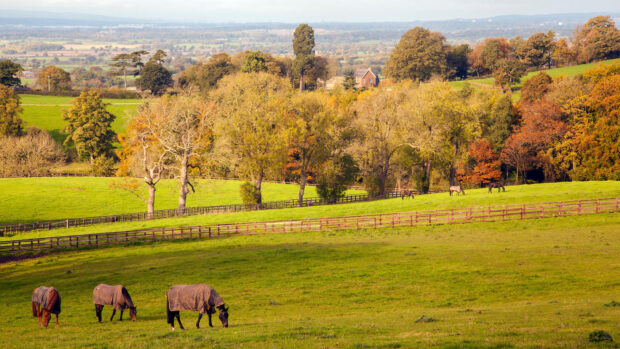Researchers are calling on horse owners to help them identify previously unconsidered triggers for laminitis.
PhD students Phillipa Davies and Ashley Ward, who are studying at Scotland’s Rural College (SRUC), are looking for native ponies in northern Scotland to take part in their linked research projects.
Laminitis cases are commonly linked to changes in the sugar content of grass, or the amount of grass consumed (pasture-associated laminitis or PAL). It is also widely recognised that obese animals and those with altered levels of key blood hormones such as insulin and adiponectin are at increased risk.
Although these triggers are recognised, the new research aims to look at why some horses are more susceptible to developing the condition than others. Not all at-risk animals go on to develop laminitis, and the condition can also occur in lean equines.
The researchers, who are collaborating with WALTHAM Petcare Science Institute and the University of Aberdeen’s Rowett Institute, want native-breed owners to come forward and complete a questionnaire, as well as allowing samples to be collected from their pasture and ponies.
By studying the faeces and urine of individual animals, they want to see if differences in the ability of individual ponies to metabolise and use pasture can help identify those at a higher risk.
While many owners of laminitis-prone horses know to avoid grasses high in sugar, it is also hoped the study will shed more light on what these means in practical management terms.
The second project will look at the species make-up of Scottish grazing land and evaluate, among other things, the sugar content of the different grass species throughout the year. From this, the researchers hope to establish associations between the chemical composition of grass and laminitis risk.
SRUC’s Dr Pippa Morrison, one of the supervisors on the studies, said: “We know that for many owners of horses and ponies, the possibility of their animal developing laminitis is a constant worry and a very real concern.
“When it happens, laminitis can arrive with little or no warning and be quite shocking. All too often animals suffer extreme pain and the consequences can be devastating.
Continues below…

Owner’s shock as couple remove laminitic mare’s grazing muzzle to feed her bread
‘People have had muzzles cut off with knives, fly masks removed, grass cuttings and potato peelings emptied in fields –

Vets’ top tips for vital winter weight loss
Top vets have shared advice on how to get horses and ponies in suitable condition before the spring

Subscribe to Horse & Hound magazine today – and enjoy unlimited website access all year round
“These studies have been carefully designed to help us better understand some of the risk factors associated with laminitis, at both pony and pasture level, and may help to identify animals at increased risk and those for which recurrence of the disease is more likely.”
It is hoped the research, which is also supported by the Roland Sutton Trust and World Horse Welfare, will lead to the development of evidence-based biomarkers to identify animals at high risk of developing laminitis. It also aims to establish suitable management strategies to help reduce the occurrence of PAL.
Philippa and Ashley are looking for healthy native-breed ponies aged four and over, with no previous diagnosis of PPID (equine Cushing’s disease), to take part in these studies.
For more information or to get involved, email: projectPAL@sruc.ac.uk or call 01224 711026.
Would you like to read Horse & Hound’s independent journalism without any adverts? Join Horse & Hound Plus today and you can read all articles on HorseandHound.co.uk completely ad-free




